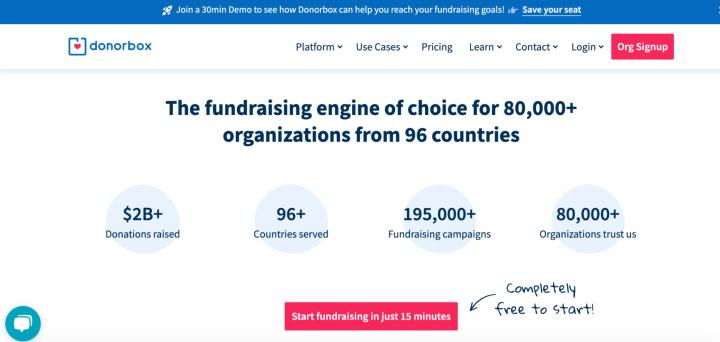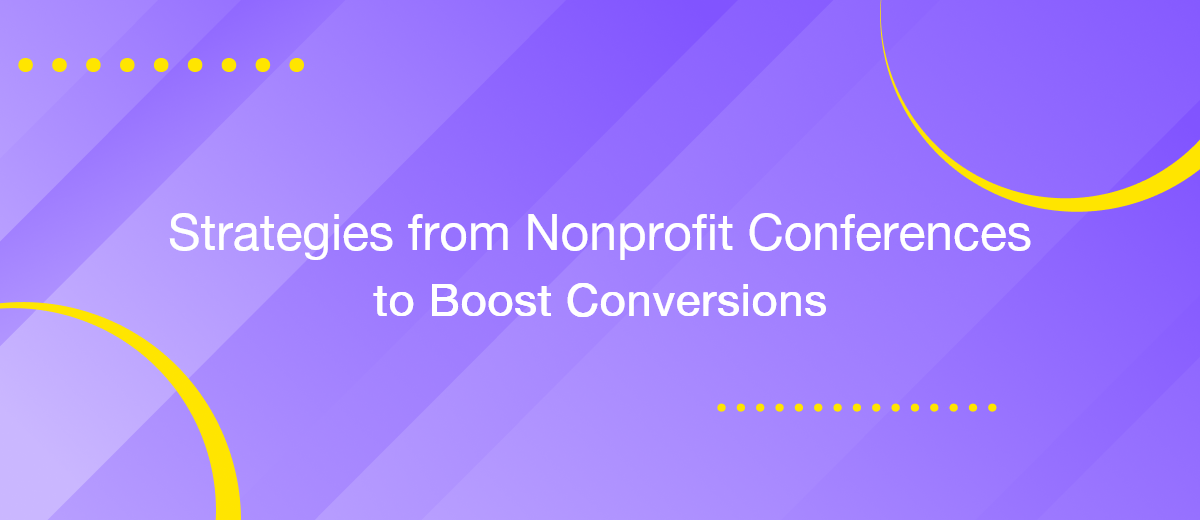Proven Strategies from Nonprofit Conferences to Skyrocket Your Website Conversions
Having a nonprofit website is great. But is it everything? Well, not if your donor retention rate is decreasing, and you’re not able to convert visitors into donors. With the rising competition and increasing donor retention costs, not-for-profit organizations (NFP) need to focus on boosting their website conversions. However, most nonprofits struggle with this. According to M+R Benchmarks, nonprofits typically lose 40% of their donors every year. And only 0.23% of organic website visitors donate, generating an average of $0.77 per visitor.
It is where not-for-profit conferences offer an opportunity to gather insights and strategies that can help boost website conversions. Let’s explore them in this blog!
Importance of Website Conversions for Nonprofits
For nonprofits, conversions can mean acquiring new donors, increasing recurring contributions, or engaging supporters in advocacy efforts. Without a focus on improving these metrics, nonprofits risk losing valuable opportunities to further their mission.
Here are some key reasons why website conversions matter for nonprofits:
- Maximizing donor impact: A streamlined conversion process ensures more visitors complete their donations, helping not-for-profit achieve their goals faster.
- Building long-term support: Converting visitors into recurring donors or volunteers fosters a reliable base for sustained growth.
- Increasing awareness: High conversion rates mean more people are engaged and informed about the nonprofit’s mission, amplifying its reach.
- Optimizing resources: A well-optimized website reduces the cost per conversion, allowing nonprofits to allocate resources more effectively.
- Enhancing credibility: A user-friendly, high-converting website reflects professionalism, building trust with potential supporters.
Website Conversion Lessons from Nonprofit Conferences


Nonprofit conferences provide a platform to learn from industry experts and leaders. Here are some insights about boosting website conversions that we have learned from these conferences:
1. Leveraging compelling storytelling
NFP conferences consistently emphasize the power of storytelling in engaging visitors. A compelling story humanizes your mission, making it relatable and memorable. Using case studies, personal anecdotes, and multimedia content like videos or podcasts can amplify the emotional connection. This, in turn, inspires visitors to support your cause by donating or volunteering. A well-crafted story humanizes your mission, evoking emotions that inspire action. Sharing real-life examples of your impact—through videos, blog posts, or testimonials—can create a connection that motivates users to contribute or volunteer.
2. Simplifying donation processes
Simplifying the donation process is another key takeaway. Experts suggest incorporating features like recurring donation options, auto-saving donor details, and progress bars that show how close a campaign is to reaching its goal. These additions not only enhance the donor experience but also increase the likelihood of successful transactions. Nonprofit experts recommend minimizing the steps required to complete a donation. Integrating one-click payment options, pre-filled forms, and multiple payment methods can significantly reduce friction and improve the likelihood of conversions.
3. Enhancing website accessibility
Conferences often stress the importance of accessibility. Making your website accessible ensures inclusivity and improves user experience. This includes adding high-contrast visuals for visually impaired users, enabling keyboard navigation, and offering multilingual options to cater to diverse audiences. An accessible website not only broadens your reach but also reinforces your commitment to inclusivity. Key strategies include optimizing for screen readers, using Alt text for images, and ensuring mobile responsiveness.
4. Utilizing data-driven insights
Understanding visitor behavior through data analytics is a recurring theme in not-for-profit conferences. Beyond basic metrics, tracking conversion paths and engagement levels can help identify underperforming pages. Tools like A/B testing and predictive analytics offer actionable insights to refine your strategies for optimal results. Tools like Google Analytics and heatmaps provide valuable insights into user interactions, helping organizations identify bottlenecks and optimize their conversion paths. Learn more about data-driven decision-making.
5. Building trust with testimonials

Testimonials from donors, beneficiaries, or volunteers can instill trust in potential supporters. Including video testimonials, impact quotes, or before-and-after stories on key landing pages can make your message more persuasive and relatable, encouraging visitors to take the next step. Highlighting positive feedback and success stories on your website demonstrates credibility and encourages others to get involved.
6. Implement automation for better engagement
Automation tools are frequently discussed at nonprofit conferences as a way to streamline processes and improve engagement. For instance, automated email campaigns or follow-up reminders can nurture relationships with donors and increase the likelihood of repeat contributions.
Practical Tips for Implementing Strategies
Below are some tips for implementing website conversion strategies discussed above:
1. Conduct user experience (UX) audits regularly
A periodic UX audit helps identify and address areas of your website that may be deterring conversions. Evaluate navigation, loading speed, and mobile compatibility to ensure a seamless user experience.
2. Stay updated with the latest nonprofit trends
Attending conferences and subscribing to industry blogs keeps you informed about emerging trends and best practices. Staying current helps you implement innovative strategies to stay ahead of the curve.
3. Collaborate with web development experts
Partnering with experienced web developers ensures your website is optimized for conversions. Professionals can help incorporate advanced features like AI-driven personalization and interactive elements to enhance user engagement. Explore personalized marketing trends.
4. Engage in regular training sessions for your team
Training your team ensures they’re equipped to use the latest tools and strategies effectively. Workshops on data analysis, content creation, and donor engagement can significantly boost your organization’s online performance.
Emerging Trends from Nonprofit Conferences
Here are some nonprofit website conversion trends that we might get to see in 2025 and beyond:
1. AI-driven personalization
Artificial intelligence is revolutionizing how nonprofits interact with their audience. By analyzing user behavior, AI tools can deliver personalized experiences, such as tailored donation prompts or content recommendations. For example, a nonprofit can use AI to suggest specific causes based on a donor's previous contributions.
2. Interactive features
Interactive elements like quizzes, donation calculators, and gamified donation campaigns are gaining traction. These features make user engagement fun and rewarding, encouraging visitors to take action. For instance, a quiz that matches donors with causes they are passionate about can significantly increase engagement.
3. Integration with social media
Social media integrations allow nonprofits to expand their reach and connect with supporters. Features like social login options and shareable content buttons simplify the user journey, increasing the likelihood of conversions. Discover how user-generated content can enhance your marketing efforts.
4. Video storytelling
Videos are becoming a dominant trend in engaging audiences. NFP can create short, impactful videos that highlight their mission, showcase success stories, or explain how donations are used. Platforms like YouTube or Instagram Reels can amplify their reach and inspire more conversions.
5. Cryptocurrency donations
An emerging trend discussed at not-for-profit conferences is the acceptance of cryptocurrency donations. By integrating platforms that support crypto payments, nonprofits can appeal to a tech-savvy donor base and unlock new funding opportunities.
6. Sustainability focused campaigns
Sustainability and eco-conscious initiatives are resonating with modern audiences. Nonprofits can align their campaigns with sustainability goals, such as reducing carbon footprints or supporting green initiatives, to attract environmentally conscious donors.
Conclusion
Nonprofit conferences provide invaluable insights into optimizing website conversions through storytelling, simplification, accessibility, and emerging technologies. By implementing these strategies, nonprofits can maximize their online impact. Platforms like ApiX-Drive simplifies workflow automation and integration, enabling organizations to save time and focus on their mission.

